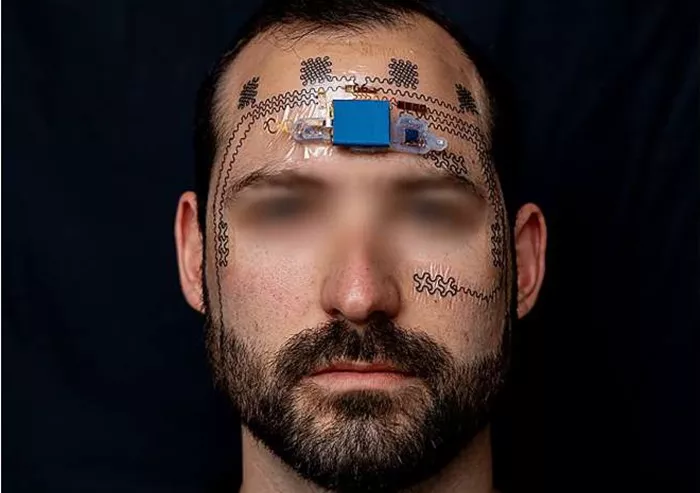A team of engineers at the University of Texas at Austin has developed a wireless electronic tattoo that can track mental fatigue by decoding brainwave activity—offering a noninvasive alternative to bulky electroencephalography (EEG) caps.
Published today in the journal Device, the study introduces a lightweight, sticker-like forehead tattoo that adheres to the skin and measures real-time cognitive load. Researchers say the technology has the potential to improve workplace safety, particularly in professions that demand constant vigilance, such as air traffic control, long-haul trucking, and emergency response.
“We’ve long monitored workers’ physical health, tracking injuries and muscle strain,” said Luis Sentis, professor of engineering at UT Austin. “Now we have the ability to monitor mental strain, which hasn’t been tracked. This could fundamentally change how organizations ensure the overall well-being of their workforce.”
Smart Monitoring for the Brain’s ‘Goldilocks Zone’
The human brain functions best within a “Goldilocks zone”—a cognitive state that is neither overtaxed nor under-stimulated. Maintaining that optimal level of mental workload is key to performance, but it varies widely from person to person, researchers explained.
“There is an optimal mental workload for optimal performance,” said senior researcher Nanshu Lu, also an engineering professor at UT Austin. “This e-tattoo helps us capture that in real time.”
The device includes a compact battery pack and flexible, stretchable sensors that conform closely to the contours of the wearer’s forehead. These sensors are engineered in wavy loops and coils to enhance signal clarity by maintaining better contact with the skin than conventional EEG caps.
Unlike traditional EEG systems, which can cost upwards of $15,000 and struggle to accommodate varying head shapes, the e-tattoo is designed for personalized, consistent placement. Using facial feature measurements, researchers tailor each device to the individual for more accurate readings.
AI Integration and Early Results
The team tested the e-tattoo on six participants who performed a memory task with increasing levels of difficulty. The device captured shifts in brainwave activity—rising theta and delta waves, associated with heightened cognitive demand, and falling alpha and beta waves, signaling fatigue.
These patterns were fed into an artificial intelligence (AI) model trained to predict a user’s level of mental strain. The system successfully distinguished between different workload levels and forecasted when users were nearing cognitive overload.
Aiming for Accessibility and Future Expansion
Affordability is a key advantage. The battery pack and microchip components cost about $200, while the disposable sensor patches are just $20 each. This makes the e-tattoo significantly cheaper than traditional EEG systems, expanding access for broader applications.
“Being low cost makes the device accessible,” Sentis said. “One of my wishes is to turn the e-tattoo into a product we can wear at home.”
Currently, the e-tattoo can only be applied to hairless skin. However, researchers are developing ink-based sensors that can function on the scalp, enabling full-head coverage and even more detailed brain monitoring.
The innovation marks a significant step toward real-time mental health tracking and opens new possibilities for personalized brain care in daily life and the workplace.
Related topics:

